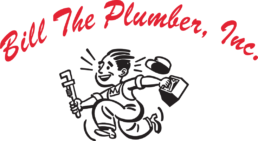How to Find Leaks Behind the Walls
Finding and repairing leaks behind walls is one of the most challenging tasks for homeowners to deal with, but a licensed professional plumber can offer his expertise to solve such water system issues. Detecting and locating the leaks can help in reducing damage to walls, floors and ceilings of your home. Walls can trap hidden moisture, which could lead to the risk of mold buildup.
Look for Wet Spots
First, you should make sure you turn off all the electrical source of power, especially if the leak is near any wet spots on the wall. Using a utility knife or a drywall saw, cut the wall approximately 1 foot higher than the drenched area, but not too deep to avoid further damage to the concealed pipes. Furthermore, ensure the wall cavities marked for cuts have no electrical wiring. You can also use a reciprocating saw to cut rigid materials, including plaster. Use a stud finder to mark the wet areas, and then cut along studs to expose any major leaks.
Use a Flashlight
You can locate leaks behind your walls using a flashlight and a mirror by pointing the flashlight towards the ceiling while holding it inside the wall and examining the wall interiors using a hand mirror. The pipe should be visible from this angle, and if possible, run the flashlight along it as you try to locate any wet spots or drips. You will easily find the leak if you see a blackened spot inside the wall caused by water damage.
Check the Water Meter
Many plumbing leaks within your home usually occur near fixtures, such as toilets, tubs, and sinks. However, once you suspect that the leak is located behind the walls, you should call a licensed professional plumber to examine it. Ensure all the faucets in your home are turned off, including any shutoff valve, especially if you have toilets that run between flushes or dripping faucets. Check your water meter and record the position of the “1-cubic-foot” dial, and wait for approximately two hours. If you come back to find the dial has shifted, there are high chances you have a leak behind the walls.
Splashing and Hissing Sounds
When you suspect a leak in a specific location near the walls, you should silently try to listen to any splashing or hissing sounds, which may point toward a minor leak. However, a louder sound of running water shows that a pipe behind the wall has a larger split. Identify an area adjacent to the source and access the damaged piped by cutting the wall open.
A leaking pipe behind the walls could remain unnoticed because it develops slowly. Therefore, immediately you find the leak, contact a licensed, professional plumber to make the repairs as quickly as possible and to reduce the extent of damage.



